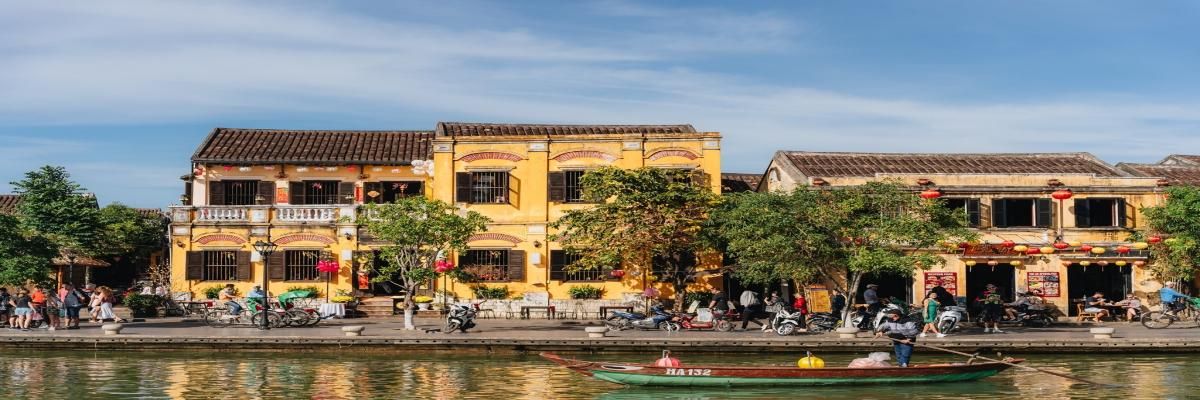Lantern-Making Village – A Must-Visit Destination in Hoi An
Traditional lanterns are one of the most iconic symbols of Hoi An, and they are recognized as UNESCO World Heritage Sites. The craft of lantern-making in Hoi An Dates back over 400 years, with more than 30 production facilities currently active in the area. Hoi An's lanterns are not only displayed along the streets and sold in shops for tourists but have also reached international markets.
Every house in Hoi An hangs lanterns, creating a distinctive beauty unique to this ancient town. This craft was honored as one of Vietnam's exemplary traditional villages in 2011, among a total of nine selected villages nationwide.
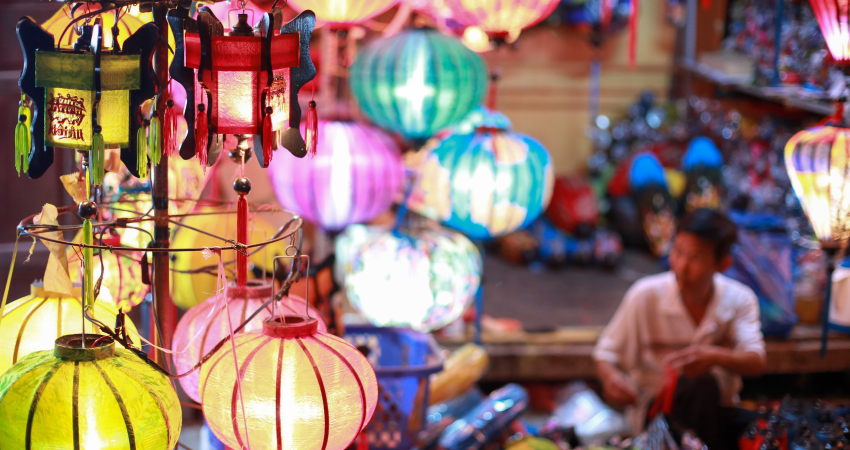
Hoi An's lanterns now come in a wider variety of shapes, designs, and colors to meet changing consumer preferences while retaining their traditional charm. Made primarily from bamboo and fabric, each lantern becomes a masterpiece of design, aesthetics, and Vietnamese cultural value through artisans' skillful hands.
Lanterns have long been an integral part of Hoi An's lifestyle. From simple and rustic designs to luxurious and intricate ones, these lanterns are versatile for home decoration, celebrations, festivals, and even adorning hotels, restaurants, and cafes.
Thanh Ha Pottery Village
Nestled along the gentle Thu Bon River, Thanh Ha Pottery Village is a charming tourist destination in Hoi An. Despite facing periods of decline over time and history, the craft has been gradually revived through the dedication of senior artisans and elders. Today, Thanh Ha pottery has become a vital part of Hoi An's cultural and economic tourism development.
Using their skilled and dexterous hands, the village's artisans create terracotta products such as lime pots, wine jars, teapots, and water jugs, as well as familiar animal figurines like those from the “Lục Súc Tranh Công” tradition.
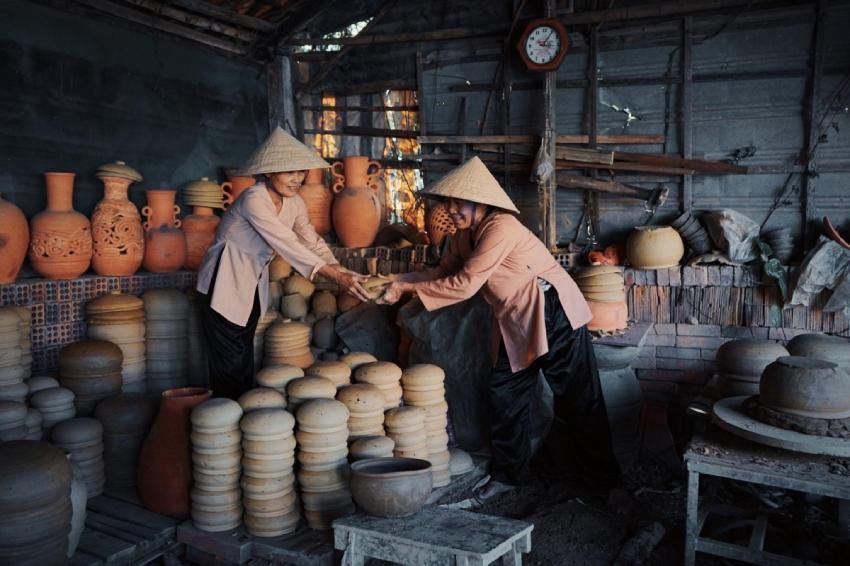
Since Hoi An Ancient Town was recognized as a UNESCO World Heritage Site, Thanh Ha Pottery Village has become a popular tourist attraction. The village now produces beautiful ceramic items of significant value, attracting visitors from near and far to discover its timeless craft.
Tra Que Vegetable Village
Tra Que Village, located in Cam Ha Commune, Hoi An City, Quang Nam Province, has long been renowned for its uniquely flavored vegetables, unlike those found anywhere else. This “green” tourist destination is a favorite among visitors to Hoi An Ancient Town. Today, Tra Que is not only famous for its high-quality, organic vegetables but also as a must-visit site for both domestic and international travelers.
Currently, the village is home to 220 farming households, 130 of which specialize in intercropping and rotating crops over an area of 40 hectares. Tra Que is known for its 20+ varieties of leafy and aromatic herbs, including some that are unmatched in flavor, such as basil, perilla, and coriander. When mixed together, these herbs create a perfect balance of five distinct tastes: spicy, sour, sweet, bitter, and astringent.

Herbs like scallions and cilantro pair perfectly with jellyfish salads and sour fish soup, while vegetables like water spinach and wild celery are ideal for hotpot dishes. Meanwhile, herbs like Vietnamese mint, basil, and chives elevate local delicacies such as Cam Nam’s clam salad.
Thanks to their exceptional flavors, Tra Que vegetables have helped make Hoi An and Quang Nam's rustic dishes famous far and wide.
Kim Bong Carpentry Village
Kim Bong Carpentry Village, located on the right bank of the lower Thu Bon River in Cam Kim Commune, Hoi An, Quang Nam, is a renowned traditional craft village. It is one of Hoi An’s most famous destinations, known for its artistic works and cultural values preserved to this day, attracting both domestic and international visitors.
Kim Bong Carpentry Village began focusing on woodworking in the 16th century. Over the years, it gained fame for crafting household items, and boats, and constructing temples and pagodas. This village also became a hub for merchants from across the country and beyond.
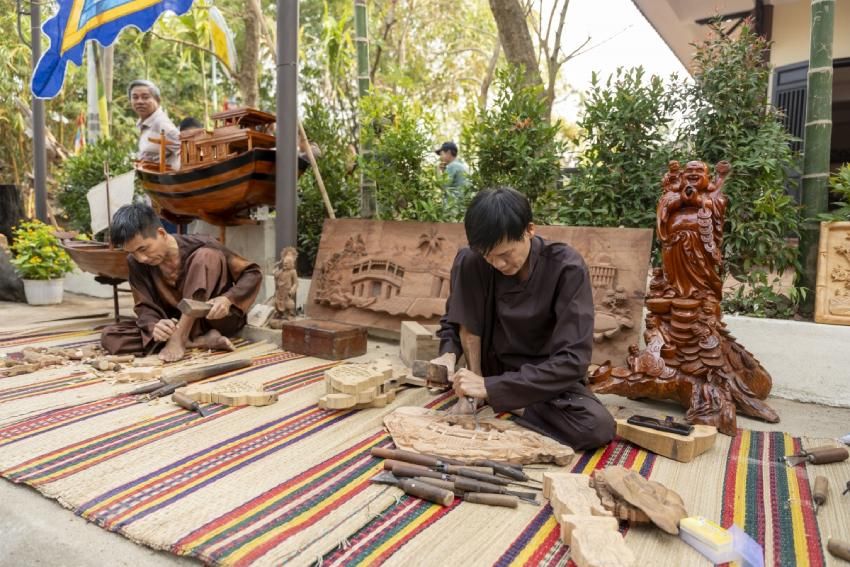
Amidst the alleys of nearly 1,000 homes in this renowned carpentry village, the sounds of wood carving, furniture making, and house construction quietly resonate. Carpenters, regardless of age, each take charge of specific tasks to complete a finished product. Working tirelessly day and night, these artisans are driven by their passion and deep love for their craft, a hallmark of Hoi An's spirit.
Ban Thach Mat-Making Village
Ban Thach Mat-Making Village, with a history spanning over 500 years, is one of the three oldest traditional craft villages in Quang Nam. When visiting this Hoi An craft village, you can experience its lively morning market, usually held between 4 and 5 a.m.
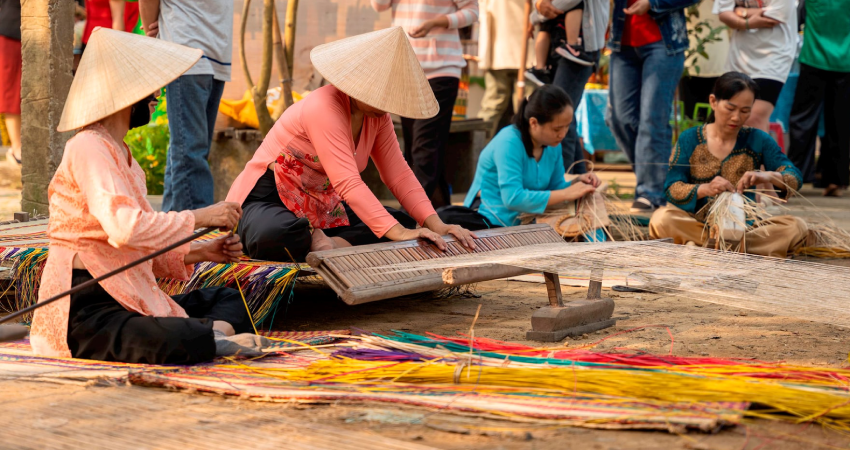
A trip to Ban Thach offers a unique opportunity to witness the process of creating beautiful straw mats. What sets Ban Thach mats apart is that their intricate patterns are woven directly from jute and sedge fibers, rather than being stamped with pre-made templates as seen elsewhere.
Hoi An Silk Village
Hoi An Silk Village is a traditional craft village where the ancient art of silk weaving and sericulture (silkworm farming) is preserved and showcased. A visit to this village allows you to explore the origins of the "Maritime Silk Road" from the 17th century.
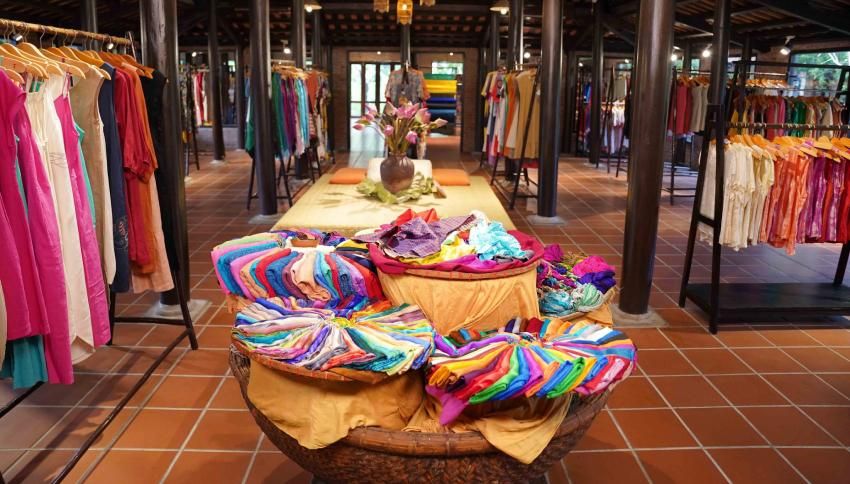
The village boasts a collection of 100 elegant ao dai and traditional garments representing Vietnam’s 54 ethnic groups. It is also home to a 10-meter-tall ancient mulberry tree from the Champa era, with its uniquely shaped "bird-foot" leaves.
Don’t miss the exhibition of silk products, where you can learn how to distinguish genuine Hoi An silk from imitations.
The traditional craft villages in Hoi An are the keepers of its rich cultural heritage and the essence of its people. These villages have safeguarded Hoi An's beauty for generations. Hopefully, this information will make your upcoming trip even more memorable.



